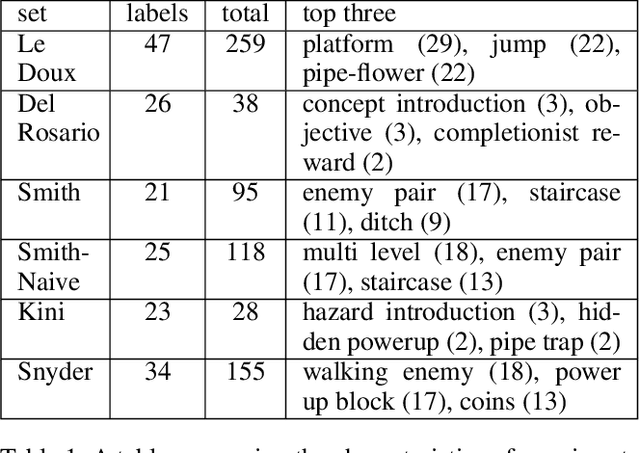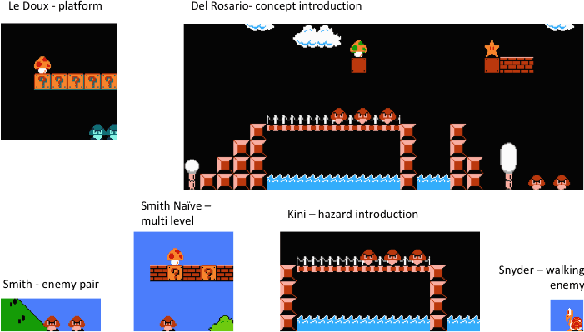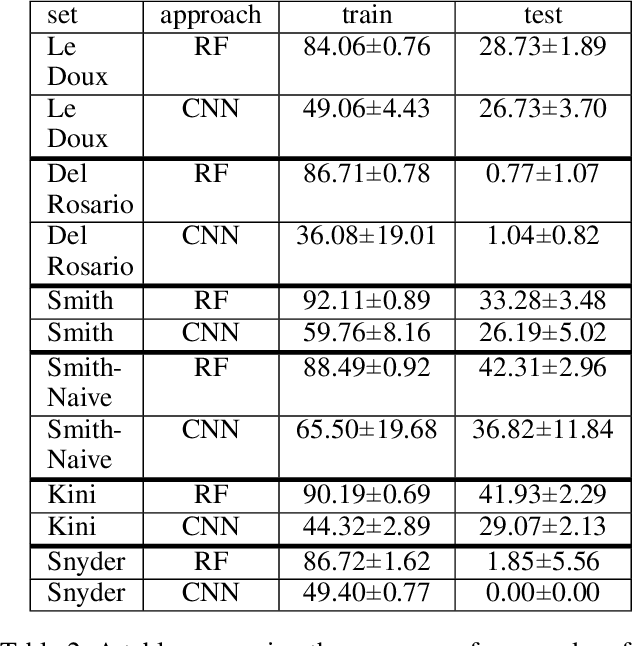Gillian Smith
Procedural Content Generation via Knowledge Transformation (PCG-KT)
May 01, 2023Abstract:We introduce the concept of Procedural Content Generation via Knowledge Transformation (PCG-KT), a new lens and framework for characterizing PCG methods and approaches in which content generation is enabled by the process of knowledge transformation -- transforming knowledge derived from one domain in order to apply it in another. Our work is motivated by a substantial number of recent PCG works that focus on generating novel content via repurposing derived knowledge. Such works have involved, for example, performing transfer learning on models trained on one game's content to adapt to another game's content, as well as recombining different generative distributions to blend the content of two or more games. Such approaches arose in part due to limitations in PCG via Machine Learning (PCGML) such as producing generative models for games lacking training data and generating content for entirely new games. In this paper, we categorize such approaches under this new lens of PCG-KT by offering a definition and framework for describing such methods and surveying existing works using this framework. Finally, we conclude by highlighting open problems and directions for future research in this area.
* 15 pages, 14 figures
Integrating Automated Play in Level Co-Creation
Nov 20, 2019

Abstract:In level co-creation an AI and human work together to create a video game level. One open challenge in level co-creation is how to empower human users to ensure particular qualities of the final level, such as challenge. There has been significant prior research into automated pathing and automated playtesting for video game levels, but not in how to incorporate these into tools. In this demonstration we present an improvement of the Morai Maker mixed-initiative level editor for Super Mario Bros. that includes automated pathing and challenge approximation features.
* 2 pages, 2 figures, AIIDE Workshop on Experimental AI in Games
Explainable PCGML via Game Design Patterns
Sep 25, 2018



Abstract:Procedural content generation via Machine Learning (PCGML) is the umbrella term for approaches that generate content for games via machine learning. One of the benefits of PCGML is that, unlike search or grammar-based PCG, it does not require hand authoring of initial content or rules. Instead, PCGML relies on existing content and black box models, which can be difficult to tune or tweak without expert knowledge. This is especially problematic when a human designer needs to understand how to manipulate their data or models to achieve desired results. We present an approach to Explainable PCGML via Design Patterns in which the design patterns act as a vocabulary and mode of interaction between user and model. We demonstrate that our technique outperforms non-explainable versions of our system in interactions with five expert designers, four of whom lack any machine learning expertise.
 Add to Chrome
Add to Chrome Add to Firefox
Add to Firefox Add to Edge
Add to Edge